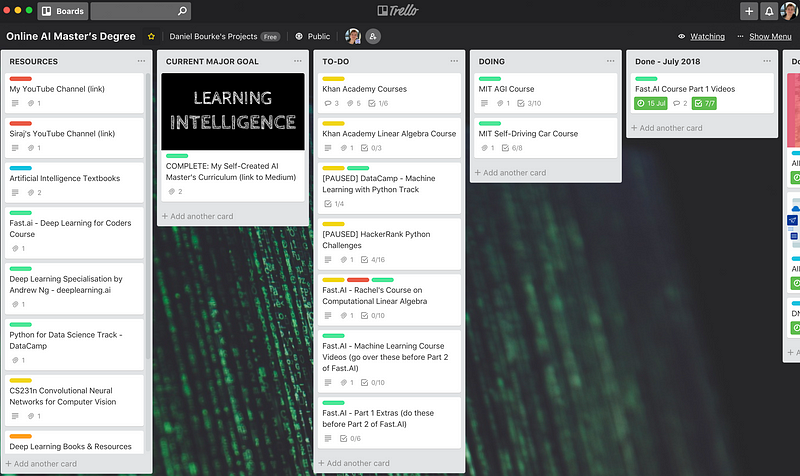How I’m Learning Deep Learning — Part V
Major update: I got hired as a machine learning engineer. Max Kelsen is awesome. We’re working on some cool things. Monday’s are research days. I made a short-film showing what we get up to.
Since last post, I graduated from Udacity’s Artificial Intelligence Nanodegree. It’s a great course. One of the best I’ve ever taken.
Many people have reached out and asked if it’s enough on its own to get a role somewhere.
Short answer: Not entirely.
Slightly longer answer: Yes, if you’re able to effectively communicate what you’ve learned through a project of your own or some other extra-curricular endeavour.
Where I believe the job-readiness comes in is from doing a course such as Andrew Ng’s deeplearning.ai or Udacity’s AI Nanodegree and then using the knowledge you’ve gained to seek out a project of your own. Something which interests you enough to work on for a while and share your journey with the world. I’ve yet to properly do this.
There are some great online courses but nothing quite prepares you for when you’re working on a problem and you have to seek your own answers.
Back to basics
I started learning Python with deep learning. Kind of like being dropped at the top of a mountain without climbing the rest of it.
Since starting at Max Kelsen, much of my time has been spent cleaning and preparing datasets to use machine learning and deep learning techniques on.
Basics is probably the wrong word. But after some hands-on experience, I’ve found deep learning to be the tip of the iceberg when it comes to data. There’s no point having an epic deep learning model ready if your data looks like the local dump.
As the saying goes.
Garbage in, garbage out.
But it’s the role of a budding machine learning engineer or data scientist to change the saying around.
Garbage in, beautiful out.
To help with this, I got a book on using Python for Data Analysis by Wes McKinney. The parallels in it to what we’ve been working on lately are astounding.
My brother and I are taking the Applied Data Science with Python specialisation on Coursera. It compliments the book. I even used the exact function I learned in one of the lectures at work the other day.
Future deep learning courses
fast.ai Part 1 was epic. I love the way Jeremy teaches. He’s a real practitioner.
Though, before going on to Part 2, I’m going to go through Jeremy’s machine learning lectures and Rachel’s (co-founder of fast.ai) lecture series on computational linear algebra.
After these, I’ll be looking for some genomics + AI themed courses. The crossover between health and technology fascinates me. At Max Kelsen we’re starting a venture soon to analyse whole-genomes in an attempt to find more personalised treatments for cancer patients. I can’t wait.
In the near future, I plan on bringing these skills to the field of nutrigenomics, or nutrition matched with your DNA.
As always, these will be viewable on my Trello board.

What can you do?
If you want to learn deep learning and machine learning. Great. You’re in for a hell of ride.
But beware, not all the data you find outside of an online course comes in a neat little package.
Be sure to compliment your deep learning and machine learning abilities with the ability to take a dataset, manipulate it, dress it up nicely and take it out for dinner and you’ll have a dangerous (in a good way) set of skills on your hands.
The programming language doesn’t really matter either. Pick one and stick with it. I’ve chosen Python. I try to improve a little each day.
I publish these kind of updates regularly here and on YouTube. Be sure to subscribe for more.
Part of the How I’m Learning Deep Learning Series:
Part I: A new beginning.
Part II: Learning Python on the fly.
Part III: Too much breadth, not enough depth.
Part IV: AI(ntuition) versus AI(ntelligence).
Part V: Back to basics. (You’re currently reading this)
